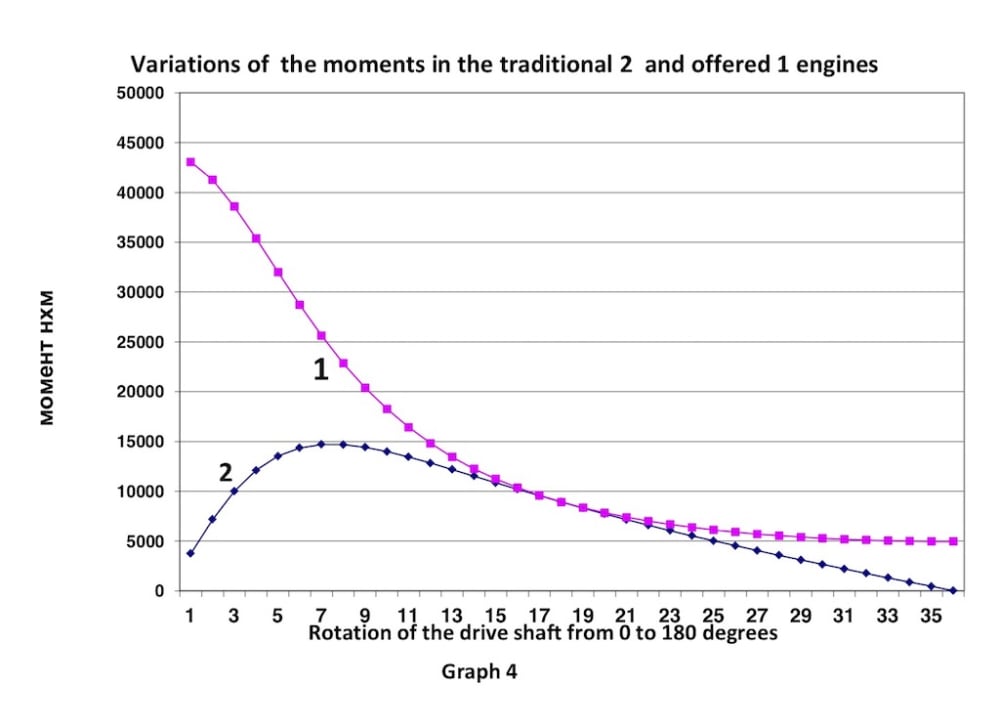We know a number of known flaws in traditional engines:
1. Inefficient combination of pressure within the cylinder and tangential force on the crankshaft. Two points need to be looked at closely when the crankshaft rotates 180 degrees:
a) The pressure changes from a maximum to a minimum value;
b) The lever size on the crankshaft changes from 0 to 1 and from 1 to 0.
2. The unburned fuel is burned up in the catalytic converter. Its dense honeycomb takes away a part of the engine power.
3. The shortness of the burned mixture’s exhaust time has a significant effect on fuel efficiency as it leads to the mixing of a fresh portion of the fuel-air mixture with unburned residues. This factor reduces engine power.
4. The compressed mixture is ignited when the piston is at TDC. The high temperature and high pressure are necessary for the complete and effective combustion of the air-fuel mixture. This condition is violated in traditional engines.
The engine consists of several units. The number of units can be from 1 to a reasonably optimal number. Each unit contains two pistons (the black main one and the red additional one), as well as two valves. The first is an intake valve. It ensures the supply of fresh fuel-air mixture to the space above the additional piston. The second valve is designed to supply compressed fuel-air mixture from the space above the additional piston to the space above the main piston. This valve also separates the spaces above the main and additional pistons after the mixture above the main piston is ignited. Each cylinder contains an exhaust hole. The pressure energy over the main piston is transferred to the drive shaft by a toothed rail (cremaillere).
There are the differences between engines.
1. At the TDC the fuel-air mixture in the space above the main piston ignites. The volume in this case will be kept constant, which will lead to a many-fold increase in pressure and temperature. This means that the moment of ignition of the fuel-air mixture must be optimized.
2. At the (BDC), the piston is stationary, while the rail runs around a 180 degree arc on a sprocket. The time for exhaust increases many-fold. The mixture will not mix with the remnants of the combusted mixture. The working stroke and the injection stroke are performed simultaneously. While the main and additional pistons are moving up, the fresh fuel-air mixture is pumped by the additional piston into the space above the main piston.
3. The arm of tangential force on the drive shaft remains constant along the piston’s entire travel path.
The change in torque values in the proposed engine is determined only by the change of pressure in the cylinder. The arithmetic average of the moment in the proposed engine is 1.83 times the arithmetic average of the moment in the traditional engine.
The reducing fuel consumption by 80% will reduce the water, land and air pollution on the same scale.
Video
Like this entry?
-
About the Entrant
- Name:Serguei Tikhonenkov
- Type of entry:individual
- Patent status:none

